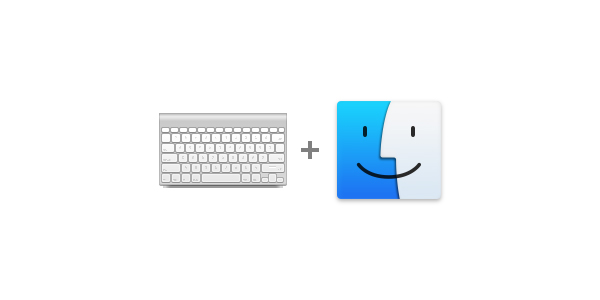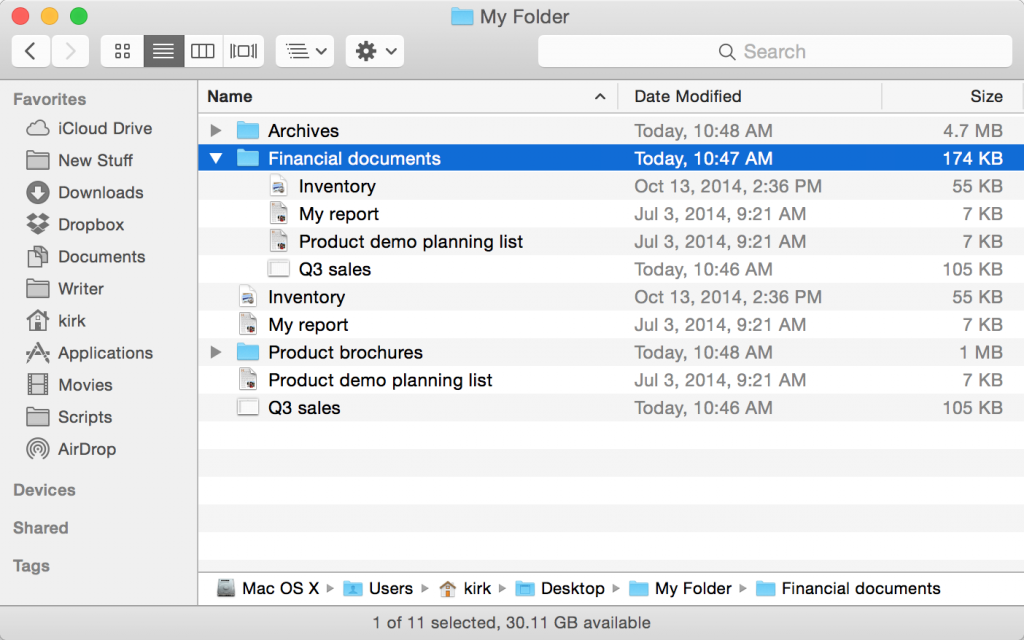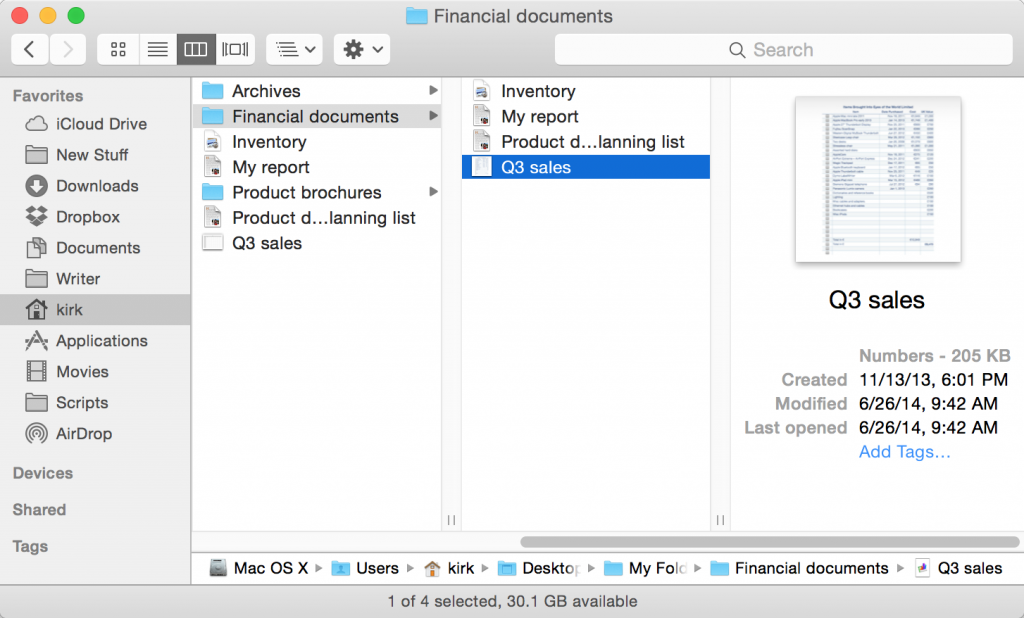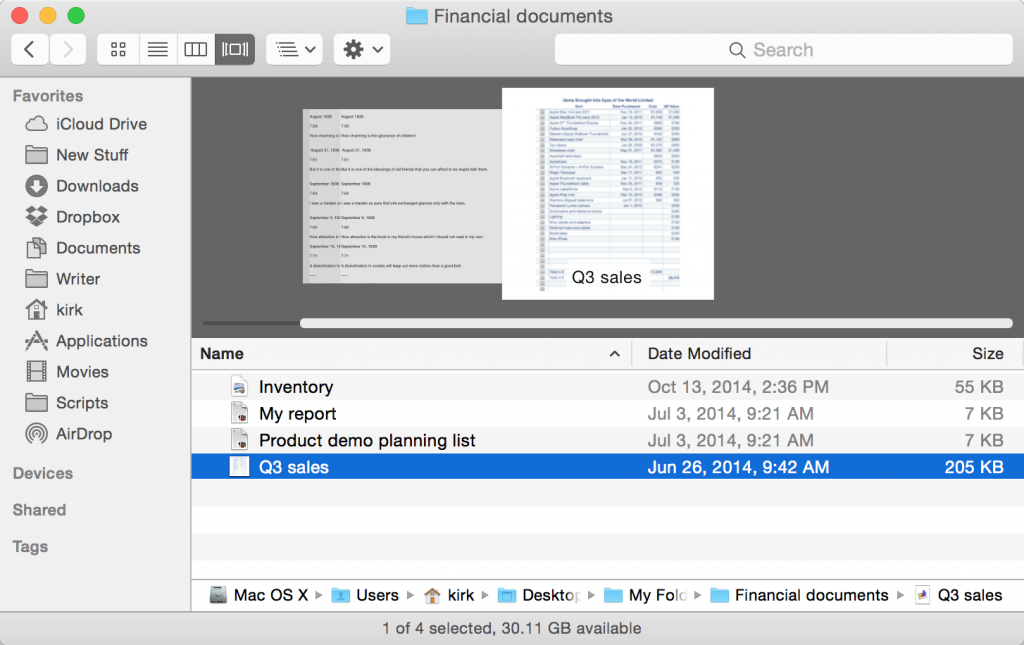How to navigate the macOS Finder from the keyboard
Posted on
by
Kirk McElhearn
When you work on your Mac, you probably spend a lot of time mousing and clicking, opening and closing folders and windows as you search for files, work with them, move them and send them to colleagues. But you can work with the Finder much more efficiently from the keyboard: you can navigate the Finder, copy and paste files, move folders and much more. If you keep your hands on your keyboard, you can save time, and, especially, keep your hands in one place, which can help avoid repetitive stress injuries.
Here’s how you can save time and work with the macOS Finder from the keyboard.
Getting to the Finder
If you don’t already know this, the first thing to learn is that you can get to the Finder very quickly by pressing a couple of keys on your keyboard. Instead of clicking the Finder icon in the Dock, or clicking on a window, just press Command-Tab to bring up the macOS application switcher. Keep holding the Command key, and press Tab repeatedly to cycle through the apps you see in the bezel that displays on-screen. When you see the Finder icon—or the icon for any app you want to use—release the keys to switch to that app.
You can tell whether you’re currently in the Finder app by looking in the top-left corner of the screen, to the right of the Apple logo; you’ll see “Finder” next to the Apple logo if the Finder app is in the foreground.
Finder Views
If you don’t currently have a Finder window on screen, first ensure that the Finder is in the foreground, and then you can open a new window by pressing Command-N.
The macOS Finder offers four different ways for you to view your content. You can view items in Finder windows by Icons, List, Columns or Cover Flow. You can switch to one of these views from the Finder’s View menu, or you can click on of the View buttons in the Finder’s toolbar.
Most people stick with just one view, but if you want to change views quickly, you can use keyboard shortcuts that show in the View menu: Command-1 for Icons view, Command-2 for List view, Command-3 for Columns view, and Command-4 for Gallery (or Cover Flow, in versions of macOS prior to Mojave).
Once you’re in a specific view, you can move around using the arrow keys, sometimes in combination with modifiers keys (mainly the Command key). Here’s how this works for the different views.
Icons View
When you’re in Icons view, you can quickly move around, enter folders, select files and more, just from the keyboard. Open a folder with some files, and you’ll see that none of them are selected.
If you press the right-arrow key, or the down-arrow key, the top-left item is selected. To select a different file, just use the arrow keys: you can arrow up or down, right or left, and select any item. To open a file, press Command-down arrow. Or to open a folder, use the same shortcut.
Once you’re inside a folder, you can move around in the same way, but you can also go back up to the enclosing folder; the one you came from. To do this, press Command-up arrow. So, in the screenshot above, I could press Command-down arrow to enter the Archives folder, browse for something, then press Command-up arrow to get back where I started.
It’s important to know that there are lots of keyboard shortcuts available once you’ve selected an item. You can copy it by pressing Command-C; you may then want to move into a folder and paste the file, using Command-V, or paste it into an email message using the same keyboard shortcut. You can duplicate an item with Command-D; print it with Command-P; make an alias with Command-Control-A (or Command-L, in versions of macOS prior to Mojave); or see information about the item with Command-I.
List View
If you use List view, the arrow-key shortcuts work a bit differently. Lists are simple, and you navigate essentially using the up- and down-arrow keys. You can enter a folder and view its contents (press Command-down-arrow), but you can also expand a folder, showing its contents along with the rest of the items in the current folder.
For example, let’s say I’m in List view, and I want to see the contents of the Financial Documents folder without opening that folder. I can just arrow down to the folder, then press the right-arrow key; the folder expands. To collapse the folder, press the left-arrow key.
Column View
Column view is designed to be navigated using the keyboard. When you’re in this view, you navigate up and down using the arrow keys, and to enter a folder, or open a file, press the right-arrow key; to go back up a level, press the left-arrow key. While you move horizontally, remember that you’re actually moving up and down in the Finder hierarchy as you move left and right.
One useful aspect of Column view is the preview pane. This shows you a thumbnail, or some text, of a selected document. (If you don’t see this, press Command-J and check Show Preview Column.)
Cover Flow (or Gallery) View
In versions of macOS prior to Mojave, Cover Flow view was a combination view. On the one hand, it shows large previews of documents in a pane in the top half of the Finder window. Below that, files and folders display in List view.
However, there is a difference in the way the List view section works. Earlier, when describing List view, I explained that you can expand and collapse folders by pressing the right-arrow or left-arrow keys. In Cover Flow view, this doesn’t work; those arrow keys only select different documents and display their previews in the top section of the window. To collapse or expand folders in Cover Flow view, you need to add the Command key; in other words, press Command-right arrow or Command-left arrow. You can still enter folders by pressing Command-down arrow, and go up a level with Command-up arrow.
Beginning with macOS Mojave, Cover Flow was replaced with Gallery view, which is similar in many ways but has some notable differences. Files in the top pane no longer have a “flow” animation, and the bottom pane now lists files in a single-row Icons view instead of a List view.
With these different Finder views and keyboard navigation shortcuts, you can save lots of time working on your Mac and move around your files and folders more quickly. Try them out and see if they change your workflow.
How can I learn more?
 Each week on the Intego Mac Podcast, Intego’s Mac security experts discuss the latest Apple news, security and privacy stories, and offer practical advice on getting the most out of your Apple devices. Be sure to follow the podcast to make sure you don’t miss any episodes.
Each week on the Intego Mac Podcast, Intego’s Mac security experts discuss the latest Apple news, security and privacy stories, and offer practical advice on getting the most out of your Apple devices. Be sure to follow the podcast to make sure you don’t miss any episodes.
You can also subscribe to our e-mail newsletter and keep an eye here on Mac Security Blog for the latest Apple security and privacy news. And don’t forget to follow Intego on your favorite social media channels: Facebook, Instagram, Twitter, and YouTube.




